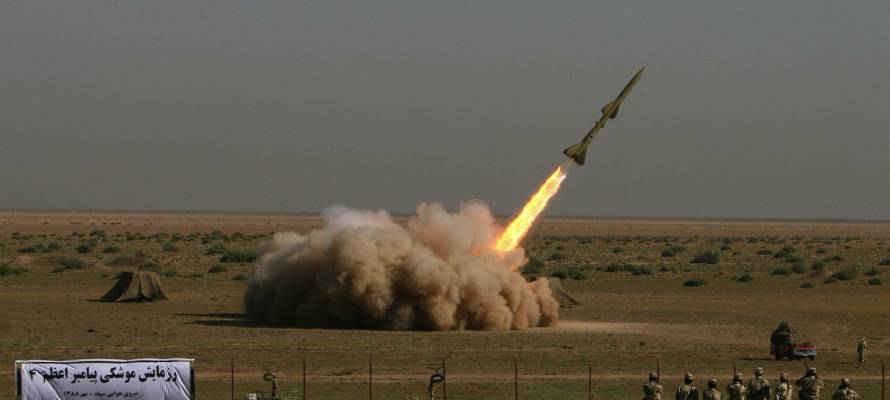Iran is engaged in negotiations with the West on its nuclear capabilities, but while doing so is developing weapons that could hinder military action against the Islamic Republic.
As Iran is engaged in negotiations with the West on its nuclear capabilities, it unveiled on Tuesday a new surface-to-air missile and two radar systems, according to an Associated Press report.
Iran claims these new developments will boost the country’s defense capabilities, and the unveiling of these systems may also serve as a veiled threat to the Western military powers, the report adds.
Air defense chief Gen. Farzad Esmaili said the Talash-3, or Endeavor-3 missile, will enable Iranian forces to “shoot down any hostile target,” even at high altitudes, AP reports. Speaking on state TV, Esmaili said the missile was successfully test-fired recently. He did not describe its range.
Tehran regularly announces military advances that cannot be independently verified.
Regarding the two newly inaugurated radar systems — Arash-2, tasked with detecting miniature drones at a distance of 150 kilometers (93 miles), and the Kayhan — the latter, Esmaili stated, is capable of detecting cruise missiles and drones, AP continues.
Iran’s elite Revolutionary Guards said last Sunday that its forces had shot down an Israeli drone as it approached an Iranian nuclear site, with Iran recovering major parts of what it had described as an advanced aircraft. The Guards issued a statement on its website, claiming that its forces fired a missile at the drone as it neared its uranium-enrichment facility in Natanz, some 240 kilometers (150 miles) south of Tehran. Israeli officials did not comment on this report.
Iran launched a homegrown defense industry in 1992 that produces light and heavy weapons ranging from mortars to tanks and submarines, the AP report says. It has surface-to-surface missiles with a range of about 2,000 kilometers (1,250 miles), which is enough to reach Israel and U.S. military bases in the region.
Iran Claims being Targeted by Foreign Spies
In another report, the deputy head of the Islamic Republic’s nuclear department told AP that Iran had disrupted plots by foreign spies to recruit its nuclear experts and stopped sabotage attempts through faulty foreign equipment supplied for its facilities. The official said that foreign intelligence agencies had targeted the experts when traveling abroad and that the experts informed their superiors about the contact upon returning home. He did not elaborate on the number of the attempts nor on the destinations where the alleged contact had occurred.
Iran’s nuclear program has been the target of sabotage in the past. In 2010, the so-called Stuxnet virus temporarily disrupted operation of thousands of centrifuges — key components in nuclear fuel production, at Iran’s Natanz uranium-enrichment facility. Iranian nuclear scientists and military officials have also been subject to targeting by unidentified hit squads. Israel was blamed in all cases, by default, but has never claimed responsibility for these incidents.
Is Iran Developing Weapons of Mass Destruction?
The U.S. and its allies, chiefly Israel, fear Iran’s nuclear program could allow it to build atomic weapons. Iran says its nuclear program is for peaceful purposes, such as generating electricity and medical research. However, Iranian leaders have threatened to annihilate Israel on numerous occasions.
Last November, Iran reached an interim deal with world powers over its nuclear program, agreeing to limit some of its uranium enrichment in exchange for some sanctions to be eased. The Islamic Republic now faces a November deadline to negotiate a final deal with world powers.
Author: Aryeh Savir
Staff writer, United with Israel
